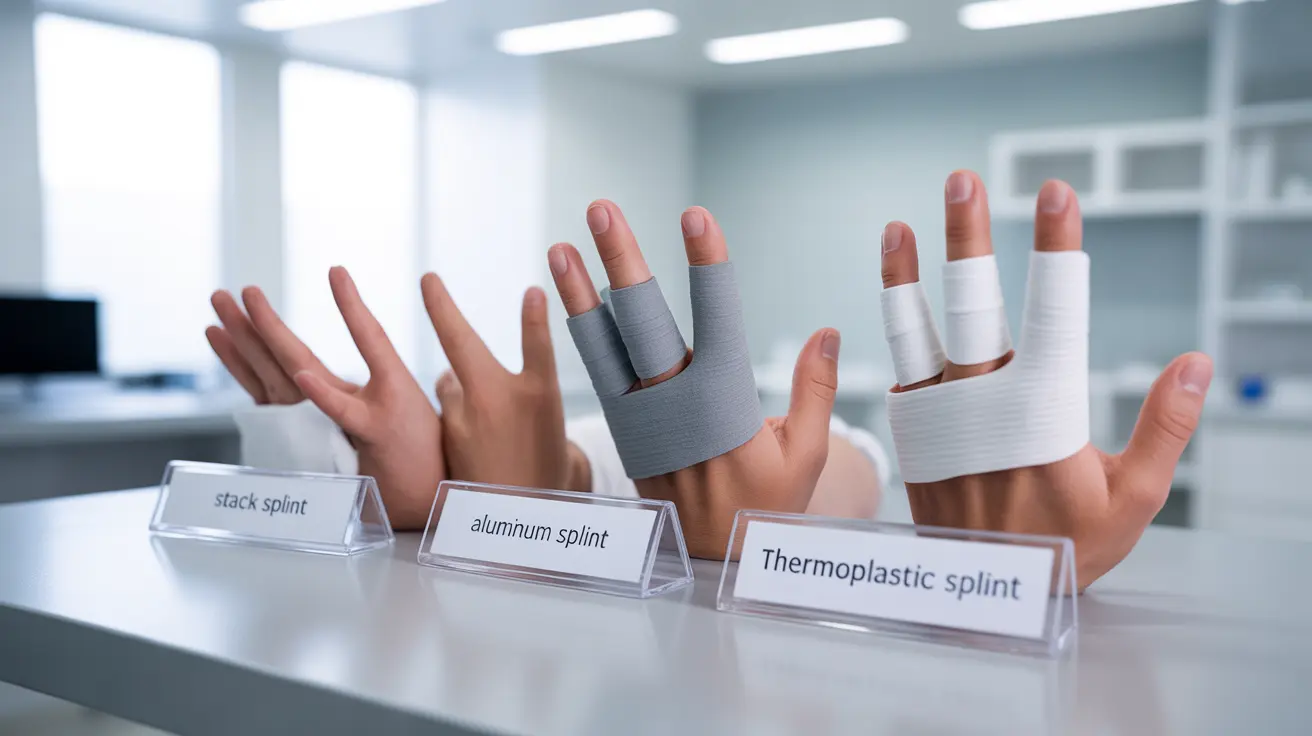When dealing with a pinky finger injury or condition, selecting the right splint is crucial for proper healing and comfort. Whether you're managing an acute injury, arthritis, or a tendon problem, understanding how to choose and use the best splint for your pinky finger can make a significant difference in your recovery and daily comfort.
In this comprehensive guide, we'll explore everything you need to know about pinky finger splints, from selecting the most appropriate type for your condition to proper care and maintenance.
Types of Pinky Finger Splints
Different conditions require different types of splints to ensure optimal healing and support. Here are the main types of splints commonly used for pinky finger conditions:
Stack Splints
Stack splints are particularly effective for conditions affecting the DIP joint (the fingertip joint). These splints provide excellent support while allowing some mobility in other finger joints, making them ideal for conditions like mallet finger.
Aluminum and Foam Splints
These versatile splints can be molded to fit your finger's specific shape and size. They're particularly useful for temporary immobilization and acute injuries, offering a good balance of support and comfort.
Plastic or Thermoplastic Splints
These durable splints can be heat-molded for a custom fit. They're excellent for long-term use and conditions requiring consistent support, such as arthritis management.
Selecting the Right Splint for Your Condition
The effectiveness of a pinky finger splint largely depends on matching the right type to your specific condition:
For Acute Injuries
Choose splints that provide firm support and complete immobilization. Aluminum and foam splints are often ideal for initial injury management.
For Arthritis
Look for adjustable splints that allow for some movement while providing support during flare-ups. Thermoplastic options often work well for arthritic conditions.
For Tendon Injuries
Select splints specifically designed for the affected joint. Stack splints are particularly effective for mallet finger and other tendon injuries affecting the DIP joint.
Proper Fit and Comfort
Ensuring proper fit is essential for both comfort and healing:
- The splint should be snug but not too tight
- Avoid any pressure points or skin pinching
- Make sure circulation isn't compromised
- Allow for some swelling if dealing with acute injuries
Splint Care and Maintenance
Proper care of your pinky finger splint will extend its life and prevent skin complications:
- Clean the splint regularly with mild soap and water
- Allow it to dry completely before reapplying
- Check for signs of wear and damage
- Replace padding as needed
- Monitor skin condition under the splint daily
Frequently Asked Questions
What is the best type of splint for a pinky finger injury or arthritis?
The best type depends on your specific condition. For acute injuries, aluminum and foam splints are often ideal. For arthritis, thermoplastic splints that can be custom-molded typically work best. Stack splints are recommended for mallet finger and DIP joint injuries.
How do I choose a comfortable and effective pinky finger splint that fits well?
Select a splint that matches your finger size, provides appropriate support for your condition, and allows necessary movement while restricting harmful motion. The splint should be snug but not tight enough to restrict circulation or cause discomfort.
How long should I wear a pinky finger splint for tendon injuries like mallet finger?
For mallet finger injuries, continuous splinting is typically required for 6-8 weeks, followed by gradual reduced use as directed by your healthcare provider. Other tendon injuries may require different durations based on severity and healing progress.
Can wearing a pinky finger splint help prevent further damage or deformities in arthritis?
Yes, proper splinting can help prevent deformities in arthritic conditions by providing support and maintaining proper alignment during activities. It's most effective when used during periods of inflammation or when performing tasks that stress the joint.
How should I care for and maintain a pinky finger splint to avoid skin irritation?
Clean your splint daily with mild soap and water, ensure it's completely dry before reapplying, and regularly inspect your skin for signs of irritation. Change padding as needed and take brief breaks from splinting (if approved by your healthcare provider) to allow skin to breathe.




